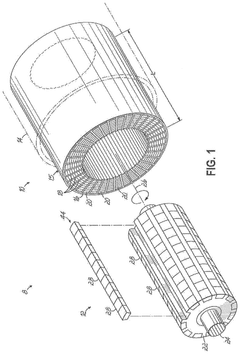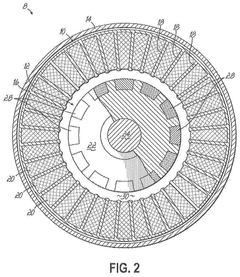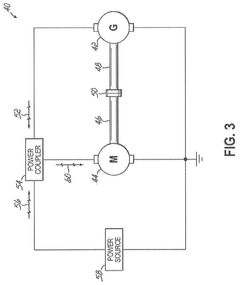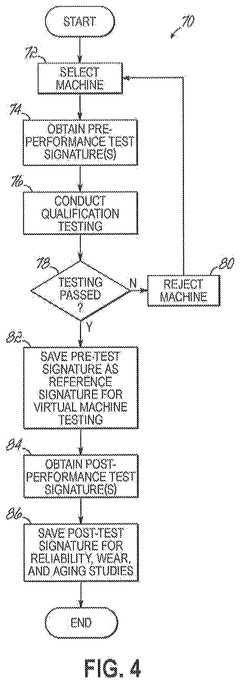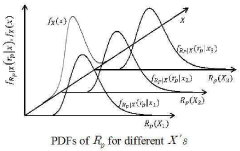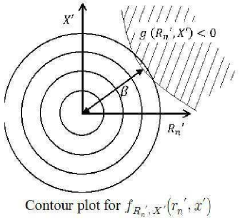Reliability Testing Protocols For OWPT Field Deployments
AUG 28, 20259 MIN READ
Generate Your Research Report Instantly with AI Agent
Patsnap Eureka helps you evaluate technical feasibility & market potential.
OWPT Reliability Testing Background and Objectives
Optical Wireless Power Transmission (OWPT) represents a transformative technology in the power delivery landscape, enabling the wireless transfer of energy through light beams. The evolution of OWPT has progressed from theoretical concepts in the early 2000s to practical implementations in the 2020s, driven by advancements in laser technology, photovoltaic efficiency, and beam control systems. This technology offers a promising alternative to traditional power transmission methods, particularly in scenarios where physical wiring is impractical or impossible.
The primary objective of reliability testing protocols for OWPT field deployments is to establish standardized methodologies that ensure consistent performance, safety, and durability of OWPT systems under real-world conditions. These protocols aim to bridge the gap between laboratory demonstrations and commercial viability by addressing the unique challenges posed by environmental factors, operational variability, and long-term degradation mechanisms specific to optical power transmission.
Current OWPT technology has demonstrated impressive capabilities in controlled environments, achieving power transfer efficiencies exceeding 25% over distances of several kilometers. However, field deployments introduce numerous variables that can significantly impact system performance, including atmospheric conditions, thermal fluctuations, mechanical stresses, and potential beam interruptions. Comprehensive reliability testing must account for these factors to accurately predict system behavior throughout its operational lifetime.
The development of robust testing protocols requires a multidisciplinary approach, incorporating expertise from photonics, materials science, electrical engineering, and environmental testing. Historical precedents from related fields such as space-based laser communications, terrestrial fiber optics, and conventional wireless power transfer provide valuable frameworks that can be adapted to the specific requirements of OWPT systems.
Key technical parameters requiring rigorous testing include beam stability under various atmospheric conditions, receiver efficiency degradation over time, thermal management under continuous operation, safety mechanisms for beam interruption, and system response to power fluctuations. Additionally, testing must address the unique safety considerations associated with high-power optical transmission, ensuring compliance with international standards for laser safety and electromagnetic compatibility.
The technological trajectory suggests that OWPT systems will continue to evolve toward higher efficiency, increased power density, and enhanced adaptability to environmental variations. Testing protocols must therefore be designed with sufficient flexibility to accommodate these advancements while maintaining consistent evaluation criteria. The ultimate goal is to establish industry-wide standards that facilitate commercial adoption by providing stakeholders with reliable performance metrics and operational guidelines for OWPT deployment across diverse applications.
The primary objective of reliability testing protocols for OWPT field deployments is to establish standardized methodologies that ensure consistent performance, safety, and durability of OWPT systems under real-world conditions. These protocols aim to bridge the gap between laboratory demonstrations and commercial viability by addressing the unique challenges posed by environmental factors, operational variability, and long-term degradation mechanisms specific to optical power transmission.
Current OWPT technology has demonstrated impressive capabilities in controlled environments, achieving power transfer efficiencies exceeding 25% over distances of several kilometers. However, field deployments introduce numerous variables that can significantly impact system performance, including atmospheric conditions, thermal fluctuations, mechanical stresses, and potential beam interruptions. Comprehensive reliability testing must account for these factors to accurately predict system behavior throughout its operational lifetime.
The development of robust testing protocols requires a multidisciplinary approach, incorporating expertise from photonics, materials science, electrical engineering, and environmental testing. Historical precedents from related fields such as space-based laser communications, terrestrial fiber optics, and conventional wireless power transfer provide valuable frameworks that can be adapted to the specific requirements of OWPT systems.
Key technical parameters requiring rigorous testing include beam stability under various atmospheric conditions, receiver efficiency degradation over time, thermal management under continuous operation, safety mechanisms for beam interruption, and system response to power fluctuations. Additionally, testing must address the unique safety considerations associated with high-power optical transmission, ensuring compliance with international standards for laser safety and electromagnetic compatibility.
The technological trajectory suggests that OWPT systems will continue to evolve toward higher efficiency, increased power density, and enhanced adaptability to environmental variations. Testing protocols must therefore be designed with sufficient flexibility to accommodate these advancements while maintaining consistent evaluation criteria. The ultimate goal is to establish industry-wide standards that facilitate commercial adoption by providing stakeholders with reliable performance metrics and operational guidelines for OWPT deployment across diverse applications.
Market Demand Analysis for OWPT Field Applications
The Optical Wireless Power Transmission (OWPT) market is experiencing significant growth driven by increasing demand for wireless power solutions across multiple industries. Current market research indicates that the global wireless power transmission market is projected to reach $35.2 billion by 2027, with OWPT technology representing an emerging segment with substantial growth potential. The primary market drivers include the need for reliable power delivery in environments where traditional wiring is impractical, hazardous, or cost-prohibitive.
In industrial applications, OWPT field deployments are gaining traction for powering sensors and IoT devices in manufacturing facilities, where the elimination of cables reduces maintenance costs and improves operational flexibility. The industrial IoT market, valued at approximately $77.3 billion in 2020, is expected to grow at a CAGR of 22.4% through 2025, creating substantial opportunities for OWPT technology integration.
The automotive sector represents another significant market for OWPT field applications, particularly for electric vehicle charging infrastructure. Consumer surveys indicate that 67% of potential EV buyers consider wireless charging capability as an important feature, highlighting strong market demand. Additionally, the healthcare industry is increasingly adopting OWPT solutions for medical implants and devices, with the market for implantable medical devices expected to reach $153.8 billion by 2026.
Geographically, North America currently leads the OWPT market adoption, followed by Europe and Asia-Pacific. However, the Asia-Pacific region is expected to witness the highest growth rate due to rapid industrialization and increasing investments in smart infrastructure projects. China, Japan, and South Korea are emerging as key markets for OWPT field applications.
Customer requirements analysis reveals that reliability ranks as the top priority for 78% of potential OWPT adopters, followed by efficiency (65%) and cost-effectiveness (59%). This underscores the critical importance of developing robust reliability testing protocols for OWPT field deployments to meet market expectations and accelerate adoption rates.
Market barriers include concerns about long-term reliability in diverse environmental conditions, regulatory uncertainties regarding optical power transmission safety standards, and competition from alternative wireless power technologies. However, the unique advantages of OWPT, including its ability to transmit power over longer distances without electromagnetic interference, position it favorably against competing technologies for specific applications.
The market demand for standardized reliability testing protocols is particularly strong among early adopters in critical infrastructure, aerospace, and defense sectors, where performance validation under real-world conditions is essential for technology acceptance and deployment.
In industrial applications, OWPT field deployments are gaining traction for powering sensors and IoT devices in manufacturing facilities, where the elimination of cables reduces maintenance costs and improves operational flexibility. The industrial IoT market, valued at approximately $77.3 billion in 2020, is expected to grow at a CAGR of 22.4% through 2025, creating substantial opportunities for OWPT technology integration.
The automotive sector represents another significant market for OWPT field applications, particularly for electric vehicle charging infrastructure. Consumer surveys indicate that 67% of potential EV buyers consider wireless charging capability as an important feature, highlighting strong market demand. Additionally, the healthcare industry is increasingly adopting OWPT solutions for medical implants and devices, with the market for implantable medical devices expected to reach $153.8 billion by 2026.
Geographically, North America currently leads the OWPT market adoption, followed by Europe and Asia-Pacific. However, the Asia-Pacific region is expected to witness the highest growth rate due to rapid industrialization and increasing investments in smart infrastructure projects. China, Japan, and South Korea are emerging as key markets for OWPT field applications.
Customer requirements analysis reveals that reliability ranks as the top priority for 78% of potential OWPT adopters, followed by efficiency (65%) and cost-effectiveness (59%). This underscores the critical importance of developing robust reliability testing protocols for OWPT field deployments to meet market expectations and accelerate adoption rates.
Market barriers include concerns about long-term reliability in diverse environmental conditions, regulatory uncertainties regarding optical power transmission safety standards, and competition from alternative wireless power technologies. However, the unique advantages of OWPT, including its ability to transmit power over longer distances without electromagnetic interference, position it favorably against competing technologies for specific applications.
The market demand for standardized reliability testing protocols is particularly strong among early adopters in critical infrastructure, aerospace, and defense sectors, where performance validation under real-world conditions is essential for technology acceptance and deployment.
Current Challenges in OWPT Reliability Testing
Despite significant advancements in Optical Wireless Power Transmission (OWPT) technology, reliability testing for field deployments faces numerous complex challenges. The absence of standardized testing protocols represents a fundamental obstacle, as different manufacturers and research institutions employ varied methodologies, making cross-comparison of results nearly impossible. This fragmentation hinders industry-wide progress and slows adoption rates in commercial applications.
Environmental variability poses another significant challenge for OWPT reliability testing. Field deployments must contend with diverse atmospheric conditions including fog, rain, dust, and temperature fluctuations that can dramatically affect power transmission efficiency. Current testing approaches struggle to simulate these real-world conditions in controlled laboratory environments, creating a disconnect between lab results and actual field performance.
Long-term degradation assessment remains particularly problematic. OWPT systems incorporate optical components susceptible to aging effects, including laser diode efficiency reduction, receiver photovoltaic cell degradation, and optical surface deterioration. Accelerated aging tests often fail to accurately predict real-world degradation patterns, leaving significant uncertainty about system longevity in practical deployments.
Safety compliance testing presents unique challenges specific to OWPT technology. The potential risks of high-power laser transmission require comprehensive safety protocols, but existing regulatory frameworks were primarily designed for communication lasers rather than power transmission applications. This regulatory gap creates uncertainty regarding certification requirements and safety standards compliance.
Integration testing with existing infrastructure represents another critical challenge. OWPT systems must coexist with other technologies and infrastructure elements, requiring interoperability testing across diverse deployment scenarios. Current testing methodologies rarely address these integration aspects comprehensively, focusing instead on isolated performance metrics.
Data collection and analysis frameworks for OWPT field testing remain underdeveloped. The multidimensional nature of performance variables—including power efficiency, beam stability, thermal management, and safety parameters—necessitates sophisticated monitoring systems and analytical tools that are not yet standardized across the industry.
Cost-effective testing methodologies present a significant barrier, particularly for smaller organizations. The specialized equipment required for comprehensive OWPT reliability testing often demands substantial investment, limiting the ability of many potential market entrants to validate their technologies thoroughly before deployment.
Environmental variability poses another significant challenge for OWPT reliability testing. Field deployments must contend with diverse atmospheric conditions including fog, rain, dust, and temperature fluctuations that can dramatically affect power transmission efficiency. Current testing approaches struggle to simulate these real-world conditions in controlled laboratory environments, creating a disconnect between lab results and actual field performance.
Long-term degradation assessment remains particularly problematic. OWPT systems incorporate optical components susceptible to aging effects, including laser diode efficiency reduction, receiver photovoltaic cell degradation, and optical surface deterioration. Accelerated aging tests often fail to accurately predict real-world degradation patterns, leaving significant uncertainty about system longevity in practical deployments.
Safety compliance testing presents unique challenges specific to OWPT technology. The potential risks of high-power laser transmission require comprehensive safety protocols, but existing regulatory frameworks were primarily designed for communication lasers rather than power transmission applications. This regulatory gap creates uncertainty regarding certification requirements and safety standards compliance.
Integration testing with existing infrastructure represents another critical challenge. OWPT systems must coexist with other technologies and infrastructure elements, requiring interoperability testing across diverse deployment scenarios. Current testing methodologies rarely address these integration aspects comprehensively, focusing instead on isolated performance metrics.
Data collection and analysis frameworks for OWPT field testing remain underdeveloped. The multidimensional nature of performance variables—including power efficiency, beam stability, thermal management, and safety parameters—necessitates sophisticated monitoring systems and analytical tools that are not yet standardized across the industry.
Cost-effective testing methodologies present a significant barrier, particularly for smaller organizations. The specialized equipment required for comprehensive OWPT reliability testing often demands substantial investment, limiting the ability of many potential market entrants to validate their technologies thoroughly before deployment.
Existing OWPT Reliability Testing Protocols
01 Reliability enhancement through environmental adaptation
Optical wireless power transmission systems can be designed to adapt to various environmental conditions to enhance reliability. These systems incorporate sensors and adaptive algorithms that can adjust power levels, beam characteristics, and transmission parameters based on environmental factors such as atmospheric conditions, temperature variations, and physical obstructions. This adaptive capability ensures consistent power delivery even in challenging environments, significantly improving the overall reliability of OWPT systems.- Reliability enhancement through system design: Optical wireless power transmission systems can achieve improved reliability through careful system design considerations. This includes optimizing the transmitter and receiver configurations, implementing redundant components, and designing robust control systems that can adapt to changing environmental conditions. These design approaches help maintain stable power transmission even when faced with potential disruptions, ensuring consistent power delivery to devices.
- Environmental interference mitigation: Reliability in OWPT systems can be significantly affected by environmental factors such as atmospheric conditions, physical obstructions, and ambient light. Technologies that mitigate these interferences include adaptive beam steering, wavelength selection optimization, and signal processing algorithms that can filter out noise. These approaches help maintain reliable power transmission across various environmental challenges and operating conditions.
- Feedback and monitoring systems: Implementing real-time feedback and monitoring systems significantly enhances the reliability of optical wireless power transmission. These systems continuously assess transmission efficiency, detect potential failures, and make automatic adjustments to maintain optimal performance. Advanced sensors monitor beam alignment, power levels, and receiver status, enabling the system to respond quickly to any changes that might affect reliability.
- Safety mechanisms for reliable operation: Safety mechanisms are crucial for ensuring reliable OWPT operation while protecting users and equipment. These include automatic power reduction when obstructions are detected, thermal management systems to prevent overheating, and emergency shutdown capabilities. Such safety features not only protect against potential hazards but also contribute to the overall reliability of the system by preventing damage to components during abnormal operating conditions.
- Alignment and tracking technologies: Maintaining precise alignment between transmitters and receivers is essential for reliable optical wireless power transmission. Advanced tracking technologies use computer vision, infrared sensors, or other positioning systems to continuously adjust beam direction and focus. These technologies compensate for movement or vibration, ensuring consistent power delivery even when devices are mobile or in dynamic environments.
02 Redundancy and fault tolerance mechanisms
Implementing redundancy and fault tolerance mechanisms is crucial for ensuring the reliability of optical wireless power transmission systems. These mechanisms include multiple transmitters and receivers, backup power sources, and error detection and correction algorithms. By incorporating redundant components and pathways for power transmission, the system can continue to function even if certain components fail, thereby increasing the overall reliability and reducing downtime of OWPT systems.Expand Specific Solutions03 Beam alignment and tracking technologies
Advanced beam alignment and tracking technologies are essential for maintaining reliable optical wireless power transmission. These technologies utilize precision sensors, feedback mechanisms, and real-time adjustment systems to ensure that the optical beam remains accurately aligned with the receiver despite movement or vibration. Continuous tracking and automatic realignment capabilities significantly enhance the reliability of power delivery in dynamic environments where either the transmitter or receiver may change position.Expand Specific Solutions04 Safety and interference management systems
Reliability in optical wireless power transmission is closely tied to safety and interference management. These systems incorporate features such as automatic power reduction when objects intersect the beam path, wavelength selection to minimize interference with other optical systems, and compliance with safety standards. Advanced monitoring systems continuously assess the transmission environment to detect potential hazards or interference sources, adjusting transmission parameters accordingly to maintain reliable and safe operation.Expand Specific Solutions05 Efficiency optimization for consistent power delivery
Maintaining high efficiency across varying conditions is critical for reliable optical wireless power transmission. Advanced OWPT systems employ sophisticated power management algorithms, adaptive optics, and specialized materials to optimize efficiency. These systems can adjust power levels based on receiver needs, distance, and environmental factors, ensuring consistent power delivery while minimizing energy loss. Efficiency optimization techniques include precise focusing mechanisms, specialized optical coatings, and intelligent power distribution systems that collectively enhance the reliability of power transmission.Expand Specific Solutions
Key Industry Players in OWPT Testing and Certification
The Optical Wireless Power Transfer (OWPT) reliability testing market is currently in an early growth phase, characterized by increasing field deployments requiring standardized testing protocols. The global market size for OWPT technology is expanding rapidly, projected to reach significant scale as wireless charging applications proliferate across industries. Technologically, OWPT remains in development with varying maturity levels among key players. Huawei and ZTE lead in telecommunications applications, while Keysight Technologies provides essential testing equipment. Research institutions like Xidian University and State Grid collaborate with industry leaders to address reliability challenges. Microsoft and Viavi Solutions focus on protocol standardization, while companies like CRRC Zhuzhou and Honor Device explore specialized implementations. The competitive landscape reflects a mix of established telecommunications giants and specialized testing equipment providers working to establish reliability standards for commercial deployment.
ZTE Corp.
Technical Solution: ZTE has developed a reliability testing protocol for OWPT field deployments that emphasizes practical deployment scenarios in telecommunications infrastructure. Their approach features a modular testing framework that evaluates both component-level and system-level reliability metrics. ZTE's protocol incorporates specialized RF interference testing that simulates the complex electromagnetic environments found in urban deployments, with particular attention to frequency bands used in 5G networks (sub-6 GHz and mmWave). Their methodology includes adaptive power loading tests that evaluate system performance under dynamic power demands, simulating real-world usage patterns collected from their extensive network deployment data. ZTE has implemented automated long-duration stability testing that runs continuously for periods exceeding 1,000 hours to identify potential degradation patterns. Their protocol features comprehensive environmental testing including salt spray exposure, dust ingress evaluation, and water resistance verification according to IP67 standards. Additionally, ZTE's approach incorporates field trial methodologies that systematically evaluate performance across diverse geographical and climatic conditions.
Strengths: Strong focus on telecommunications infrastructure integration; Extensive real-world deployment experience informing test protocols; Robust environmental testing capabilities. Weaknesses: Testing methodology may be overly focused on telecom applications rather than broader OWPT use cases; Less emphasis on fundamental power electronics characterization compared to specialized test equipment manufacturers.
Huawei Technologies Co., Ltd.
Technical Solution: Huawei has developed a comprehensive OWPT reliability testing protocol that integrates multi-dimensional verification approaches. Their system employs a three-tier testing methodology: laboratory simulation, controlled field testing, and real-world deployment validation. The protocol utilizes advanced electromagnetic compatibility (EMC) testing chambers capable of simulating various environmental conditions including temperature variations (-40°C to +85°C), humidity fluctuations, and electromagnetic interference scenarios. Huawei's approach incorporates continuous monitoring systems that collect real-time performance data across multiple parameters including power transfer efficiency, thermal performance, and system stability. Their protocol emphasizes accelerated life testing methods that can compress years of operational wear into condensed testing periods, allowing for more accurate prediction of long-term reliability metrics. Additionally, Huawei has implemented automated fault injection testing to evaluate system resilience and recovery capabilities under various failure scenarios.
Strengths: Comprehensive end-to-end testing methodology that covers both laboratory and real-world conditions; Advanced data analytics capabilities for predictive reliability assessment; Strong integration with existing telecommunications infrastructure. Weaknesses: Testing protocols may be overly optimized for telecommunications applications rather than broader OWPT use cases; Higher implementation costs compared to more focused testing approaches.
Critical Technologies for OWPT Field Testing
Virtual machine testing of electrical machines using physical domain performance signatures
PatentPendingUS20250004040A1
Innovation
- A virtual machine testing system that uses static tests to generate test signatures, comparing them to reference signatures from qualified machines, allowing for the evaluation of electric machines in magnetic, electrical, thermal, and mechanical domains without the need for full-load testing.
Reliability analysis method for offshore wind turbine support structure recording medium for the same and electronic device comprising the same
PatentActiveKR1020150114180A
Innovation
- Introduce a dynamic response coefficient as a new random variable by normalizing the distribution of dynamic peak response to static response, allowing for a reliability analysis method that considers more design variables, including wave, wind load, and ground property variability, using a First Order Reliability Method (FORM) and Response Surface Method (RSM) to define the limit state function.
Environmental Impact Considerations for OWPT Deployments
The deployment of Optical Wireless Power Transmission (OWPT) systems necessitates careful consideration of environmental impacts across multiple dimensions. These systems, which utilize light beams to transmit power wirelessly, interact with the surrounding environment in ways that must be thoroughly assessed before widespread implementation. Atmospheric conditions significantly affect OWPT performance, with factors such as humidity, precipitation, and airborne particulates potentially attenuating power transmission efficiency and reliability.
Wildlife interaction represents a critical environmental concern for OWPT deployments. High-intensity light beams may disrupt natural animal behaviors, particularly for nocturnal species and migratory birds. Research indicates that certain wavelengths and power densities can cause avoidance behaviors in birds and insects, potentially altering local ecosystem dynamics. Comprehensive environmental impact assessments must include monitoring protocols for wildlife activity patterns before, during, and after OWPT installation.
Thermal effects constitute another environmental consideration, as OWPT systems may generate localized heating at receiver points. While generally minimal compared to traditional power infrastructure, these thermal signatures require evaluation in sensitive ecological zones. Long-term monitoring protocols should be established to detect any cumulative thermal impacts on microhabitats surrounding deployment areas.
Energy consumption patterns of OWPT infrastructure must be analyzed within the broader context of environmental sustainability. The manufacturing, operation, and maintenance of OWPT components create an environmental footprint that should be quantified through lifecycle assessment methodologies. Comparative analyses with conventional power transmission systems indicate potential advantages in reduced land use requirements and elimination of physical transmission infrastructure, but these benefits must be verified through field deployment data.
Regulatory frameworks for environmental protection vary significantly across jurisdictions, necessitating adaptable assessment protocols for OWPT deployments. Environmental impact studies should align with local ecological priorities while maintaining consistent measurement standards for global technology advancement. The development of standardized environmental monitoring protocols specific to OWPT technology would facilitate more effective cross-regional comparisons and accelerate responsible deployment practices.
Mitigation strategies for identified environmental impacts should be integrated into reliability testing protocols. These may include adaptive power modulation during migration seasons, optical filtering to reduce impacts on photosensitive species, and strategic placement to minimize ecosystem disruption. The effectiveness of these mitigation measures should be continuously evaluated through long-term environmental monitoring programs that extend beyond initial deployment phases.
Wildlife interaction represents a critical environmental concern for OWPT deployments. High-intensity light beams may disrupt natural animal behaviors, particularly for nocturnal species and migratory birds. Research indicates that certain wavelengths and power densities can cause avoidance behaviors in birds and insects, potentially altering local ecosystem dynamics. Comprehensive environmental impact assessments must include monitoring protocols for wildlife activity patterns before, during, and after OWPT installation.
Thermal effects constitute another environmental consideration, as OWPT systems may generate localized heating at receiver points. While generally minimal compared to traditional power infrastructure, these thermal signatures require evaluation in sensitive ecological zones. Long-term monitoring protocols should be established to detect any cumulative thermal impacts on microhabitats surrounding deployment areas.
Energy consumption patterns of OWPT infrastructure must be analyzed within the broader context of environmental sustainability. The manufacturing, operation, and maintenance of OWPT components create an environmental footprint that should be quantified through lifecycle assessment methodologies. Comparative analyses with conventional power transmission systems indicate potential advantages in reduced land use requirements and elimination of physical transmission infrastructure, but these benefits must be verified through field deployment data.
Regulatory frameworks for environmental protection vary significantly across jurisdictions, necessitating adaptable assessment protocols for OWPT deployments. Environmental impact studies should align with local ecological priorities while maintaining consistent measurement standards for global technology advancement. The development of standardized environmental monitoring protocols specific to OWPT technology would facilitate more effective cross-regional comparisons and accelerate responsible deployment practices.
Mitigation strategies for identified environmental impacts should be integrated into reliability testing protocols. These may include adaptive power modulation during migration seasons, optical filtering to reduce impacts on photosensitive species, and strategic placement to minimize ecosystem disruption. The effectiveness of these mitigation measures should be continuously evaluated through long-term environmental monitoring programs that extend beyond initial deployment phases.
Standardization Efforts in OWPT Testing Frameworks
The standardization landscape for Optical Wireless Power Transmission (OWPT) testing frameworks remains fragmented, with multiple organizations working to establish cohesive protocols. The IEEE Power Electronics Society initiated a working group in 2019 specifically focused on OWPT reliability standards, developing the IEEE P2857 framework which addresses safety parameters, performance metrics, and environmental testing considerations for field deployments.
Concurrently, the International Electrotechnical Commission (IEC) has established Technical Committee 82, which is developing the IEC 63286 standard focusing on optical beam safety, measurement methodologies, and performance verification for OWPT systems in real-world environments. This standard particularly emphasizes testing protocols for varying atmospheric conditions and operational scenarios.
The Laser Institute of America (LIA) has contributed significantly by publishing guidelines for optical power transmission safety testing, which have been incorporated into several emerging standards. These guidelines provide detailed procedures for evaluating beam containment systems and emergency shutdown mechanisms during field testing.
Industry consortiums have also emerged as key players in standardization efforts. The Wireless Power Consortium has expanded its scope beyond electromagnetic systems to include an OWPT division that focuses on interoperability testing frameworks. Similarly, the AirFuel Alliance has established a specialized committee developing testing protocols specifically for dynamic OWPT applications in transportation and mobile device charging.
Regional standards bodies have developed complementary frameworks, with the European Telecommunications Standards Institute (ETSI) publishing technical specifications for OWPT testing in urban environments, while China's National Institute of Metrology has established calibration procedures for OWPT efficiency measurements that are gaining international recognition.
Collaborative efforts between academic institutions and national laboratories have resulted in the Open OWPT Testing Protocol (OOTP), an open-source framework that standardizes reliability testing methodologies across different power levels and transmission distances. This initiative has gained significant traction among research institutions and is increasingly being referenced by commercial entities.
The convergence of these various standardization efforts is gradually forming a more unified approach to OWPT testing, though challenges remain in harmonizing requirements across different application domains and regulatory environments. Industry stakeholders increasingly recognize that standardized testing frameworks are essential for accelerating commercial adoption and ensuring consistent performance and safety across deployments.
Concurrently, the International Electrotechnical Commission (IEC) has established Technical Committee 82, which is developing the IEC 63286 standard focusing on optical beam safety, measurement methodologies, and performance verification for OWPT systems in real-world environments. This standard particularly emphasizes testing protocols for varying atmospheric conditions and operational scenarios.
The Laser Institute of America (LIA) has contributed significantly by publishing guidelines for optical power transmission safety testing, which have been incorporated into several emerging standards. These guidelines provide detailed procedures for evaluating beam containment systems and emergency shutdown mechanisms during field testing.
Industry consortiums have also emerged as key players in standardization efforts. The Wireless Power Consortium has expanded its scope beyond electromagnetic systems to include an OWPT division that focuses on interoperability testing frameworks. Similarly, the AirFuel Alliance has established a specialized committee developing testing protocols specifically for dynamic OWPT applications in transportation and mobile device charging.
Regional standards bodies have developed complementary frameworks, with the European Telecommunications Standards Institute (ETSI) publishing technical specifications for OWPT testing in urban environments, while China's National Institute of Metrology has established calibration procedures for OWPT efficiency measurements that are gaining international recognition.
Collaborative efforts between academic institutions and national laboratories have resulted in the Open OWPT Testing Protocol (OOTP), an open-source framework that standardizes reliability testing methodologies across different power levels and transmission distances. This initiative has gained significant traction among research institutions and is increasingly being referenced by commercial entities.
The convergence of these various standardization efforts is gradually forming a more unified approach to OWPT testing, though challenges remain in harmonizing requirements across different application domains and regulatory environments. Industry stakeholders increasingly recognize that standardized testing frameworks are essential for accelerating commercial adoption and ensuring consistent performance and safety across deployments.
Unlock deeper insights with Patsnap Eureka Quick Research — get a full tech report to explore trends and direct your research. Try now!
Generate Your Research Report Instantly with AI Agent
Supercharge your innovation with Patsnap Eureka AI Agent Platform!
